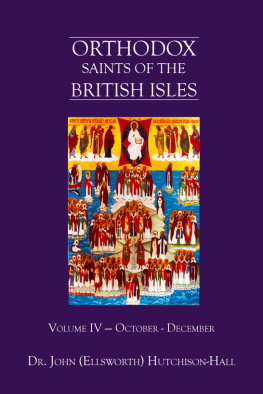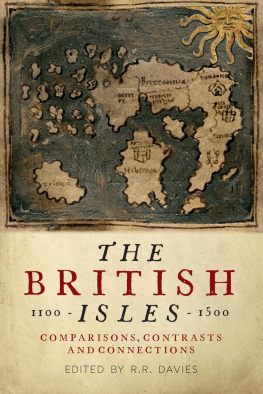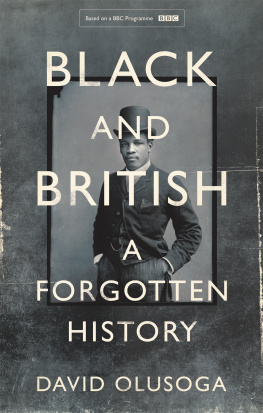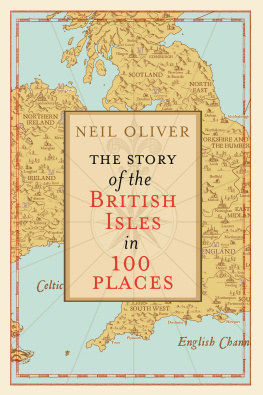Benedict Gummer - The Scourging Angel: The Black Death in the British Isles
Here you can read online Benedict Gummer - The Scourging Angel: The Black Death in the British Isles full text of the book (entire story) in english for free. Download pdf and epub, get meaning, cover and reviews about this ebook. year: 2010, publisher: Random House, genre: Religion. Description of the work, (preface) as well as reviews are available. Best literature library LitArk.com created for fans of good reading and offers a wide selection of genres:
Romance novel
Science fiction
Adventure
Detective
Science
History
Home and family
Prose
Art
Politics
Computer
Non-fiction
Religion
Business
Children
Humor
Choose a favorite category and find really read worthwhile books. Enjoy immersion in the world of imagination, feel the emotions of the characters or learn something new for yourself, make an fascinating discovery.

- Book:The Scourging Angel: The Black Death in the British Isles
- Author:
- Publisher:Random House
- Genre:
- Year:2010
- Rating:5 / 5
- Favourites:Add to favourites
- Your mark:
- 100
- 1
- 2
- 3
- 4
- 5
The Scourging Angel: The Black Death in the British Isles: summary, description and annotation
We offer to read an annotation, description, summary or preface (depends on what the author of the book "The Scourging Angel: The Black Death in the British Isles" wrote himself). If you haven't found the necessary information about the book — write in the comments, we will try to find it.
The Scourging Angel: The Black Death in the British Isles — read online for free the complete book (whole text) full work
Below is the text of the book, divided by pages. System saving the place of the last page read, allows you to conveniently read the book "The Scourging Angel: The Black Death in the British Isles" online for free, without having to search again every time where you left off. Put a bookmark, and you can go to the page where you finished reading at any time.
Font size:
Interval:
Bookmark:
Contents
About the Book
Nothing experienced in human history, before or since, eclipses the terror, tragedy and scale of the Black Death, the disease which killed millions of people in Medieval Europe.
The Scourging Angel tells the story of Britain immediately before, during and after this catastrophe. Against a backdrop of empty homes, half-built cathedrals and pestilence-saturated cities, we see communities gripped by unimaginable fear, shock and paranoia. By the time it completed its pestilential journey through the British Isles in 1350, the Black Death had left half the population dead. Despite the startling toll of life, physical devastation and sheer human chaos it inflicted, Britain showed an impressive resilience. Amid disaster many found opportunity, and the story of the Black Death is ultimately one of survival.
About the Author
Born in 1978, Benedict Gummer took a Starred Double First in History at Peterhouse, Cambridge, where he was an exhibitioner and scholar. He lives and works in Ipswich and London, where he runs a corporate responsibility consultancy.
Illustrations
The page references correspond to the printed edition from which this ebook was created. To find a specific word or phrase please use the search feature of your ebook reader.
Effigy (alabaster) of Philippa of Hainault by Jean de Lige (fl. 136181) ( The Dean and Chapter of Westminster Abbey/The Bridgeman Art Library); Funeral effigy of Edward III ( The Dean and Chapter of Westminster Abbey); Effigy (alabaster) of William Edington ( Dr John Crook FSA); Coin, obverse, half groat, reign of David II ( National Museums of Scotland); Reconstruction of a medieval cruck house, Wharram Percy ( Peter Dunn/English Heritage); Reconstruction of medieval Faccombe Netherton ( The Trustees of the British Museum); Scenes from the Luttrell Psalter, c. 132535 (vellum), English School, Add. 42130 f.170, f.171v and f.172v ( British Library Board/The Bridgeman Art Library); Scourging angels, from Le Chroniche di Giovanni Sercambi ( Archivio di Stato di Luca/Ministero per i Beni e le Attivit Culturali); Black Death in Tournai, Gilles de Muisit (12791352), after 1349 (vellum) ( Bibliotheque Royale de Belgique/The Bridgeman Art Library); Burials in East Smithfield ( Museum of London Archaeology); Extreme Unction, French School, Ms 137/1687 f.87v ( Muse Cond, Chantilly/ Giraudon/The Bridgeman Art Library); William of Wykeham and New College, English School, Ms New Coll 258 f.3v ( Warden and Scholars of New College, Oxford/The Bridgeman Art Library); Choir and east window of Gloucester Cathedral ( Alamy/Alamy); Edington Church ( Christopher Jones); Chaplet from the Colmar Treasure ( RMN/ Jean-Gilles Berizzi); Ashwell graffiti ( Adams Picture Library t/a apl/Alamy).
Europe in the mid-fourteenth century (pp. xxi); The British Isles in the mid-fourteenth century (p. xii); Southern England (p. 57); South-East Ireland (p.74); London (p. 95); South-East England (p. 144); The Midlands (p. 152); Wales (p.165); East Anglia (p.188); The North (p.221); The Borders (p.240); The Spread of the Black Death in the British Isles (p. 422). All maps by Reginald Piggott.
Maps


To my mother with admiration and love

Remember, O Lord, your covenant, and say to the the scourging angel, Now hold your hand, so that the earth is not left desolate and you do not lose every living soul.
Missa Recordare Domini,
written and issued by Pope Clement VI
during the time of the pestilence.
Preface
The purpose of this book is straightforward: to give a description of the British Isles on the eve of the Black Death; to provide an account of the progress of the epidemic through those islands; and to survey England, Wales, Scotland and Ireland as they were left after the pandemic had ceased.
The narrative starts in 1346 and ends in 1381. These dates require some explanation. It was in 1346 that the first chapter of Englands armed dispute with France, later to be called the Hundred Years War, came to an end, on the field of Crcy. At the same time the Scots war of independence was brought to an abrupt halt by the capture of King David II at the Battle of Nevilles Cross. These events provide a natural caesura in the political history of the British Isles and an appropriate place to begin the account of the horrors that would shortly follow. For it was also in 1346 that the first European contracted an unknown disease that soon swept across the Continent, killing millions as it went. The pandemic reached British and Irish shores by mid-1348 and was gone within two years, leaving perhaps half the population dead. So great a mortality, incurred in so short a space of time, had a profound effect on the survivors that remained; yet even the youngest were reaching late middle age by the 1380s, by which point it is increasingly difficult to untangle the influence of this and succeeding plagues from other, more immediate matters political crisis, schism in the church, wildly erratic weather and the unsettling alternation of bounty and dearth. It is here, therefore, that the narrative of this book comes to an end.
The compass of this book also requires explanation, for there was none of the modern political unity in the medieval British Isles; indeed, England in these years had a closer political relationship with Gascony and Calais than it did with the Highlands of Scotland. Yet it would be an even greater contrivance to extend the scope of this book to these places without drawing in France and Flanders and much of western Europe at the same time. So this book concerns itself largely with what happened north of the English Channel. It was a limitation that would have been understood by medieval as well as modern audiences for the English, Welsh, Scots, Anglo-Irish and Gaelic Irish peoples of the Middle Ages inhabited islands that both they and outsiders considered to have a degree of geographical and historical unity. There are a number of benefits to considering these nations together. For while the odd collection of peoples that inhabited the British Isles were divided among themselves, into kingdoms and nations, they rubbed up against one another along indistinct and shifting frontiers. The study of an epidemic that swept through the British Isles, crossing these boundaries almost as if they did not exist, tells us something about how these peoples related to each other. Furthermore, the extraordinary diversity of the peoples of the British Isles their differing degrees of commercialization, governmental competence, bureaucratic sophistication, agricultural development, and cultural distinctiveness provide a useful means by which differing reactions and varying results of the pestilence might be compared.
Although this book aims to present as balanced a picture of these times as is possible, five specific caveats should be given. First, England was not only the largest country by size and population but it also produced far more written material than Scotland, Wales and every part of Ireland, all added together; indeed, the extent of English record-keeping was unparalleled across Europe. The experience of this country predominates, therefore. Secondly, the voice of the literate, especially the clergy, was far louder than that of the great mass of people, whose evidence it is sometimes very difficult to hear. Consequently, this account (like many others) relies on the evidence of bishops and monks while the descriptions of villages and rural life are drawn from the records of their owners rather than the recollections of their inhabitants. Thirdly, while a thematic treatment of the story of the Black Death has been firmly rejected, the material falls naturally into discrete accounts, such as those relating to medicine or architecture. Fourthly, there is a necessary concentration on the key events of the Black Death itself, so whereas those chapters concerned with the pestilence may cover only a few months, the later chapters that deal with the aftermath of the plague cover years and decades at a time. Finally, while the book is organized in a strictly chronological order, for the purposes of comprehension and continuity there is in places some degree of overlap between chapters. On occasion, the text may also refer to events outside the timeframe of the chapter or book. It is hoped, despite these necessary imbalances and divisions, that the reader will draw from the narrative those subtleties, complexities and finely balanced conclusions that might, in a more systematized history, be obscured.
Next pageFont size:
Interval:
Bookmark:
Similar books «The Scourging Angel: The Black Death in the British Isles»
Look at similar books to The Scourging Angel: The Black Death in the British Isles. We have selected literature similar in name and meaning in the hope of providing readers with more options to find new, interesting, not yet read works.
Discussion, reviews of the book The Scourging Angel: The Black Death in the British Isles and just readers' own opinions. Leave your comments, write what you think about the work, its meaning or the main characters. Specify what exactly you liked and what you didn't like, and why you think so.










